How fleet management gets easier with smart analytics on Google Cloud
Eric Schmidt
Product Manager
Polong Lin
Developer Advocate
Editor’s note: This blog provides a deeper, under-the-hood view of this smart analytics platform demo that you can explore now, featured during Google Cloud Next ‘20: OnAir.
The ongoing COVID-19 pandemic has changed consumer purchasing behavior and, consequently, how companies need to manage their transportation logistics to meet new expectations. With large fleets of trucks to manage, how can fleet managers use modern technology to optimize their businesses? We explored the answers to this question using simulated sensor data and Google Cloud’s smart analytics platform to create a demo.
Geotab, a Canada-based company, provides data-driven insights on commercial fleet vehicles on every continent. From engine speeds to ambient air temperatures to driving and weather conditions, Geotab processes a wealth of data from more than 2 million vehicles around the world. These vehicles are equipped with Geotab's telematic solutions and a range of integrated sensors and apps.
With all of this data streaming in real time, fleet truck managers use data to predict vehicle health, monitor driver safety, and track all of this information in real time. Real-time data lets users proactively respond to things as they happen or before they happen, rather than being reactive.
To demonstrate how to solve these business challenges using smart analytics on Google Cloud, we created a live simulated world of 7,500 trucks generating approximately 25 million trip events per day. Built as a demo, the generated data simulates some of the data that might be processed as if it were integrated with actual sensors and apps from Geotab (Geotab does run a scaled environment using Google Cloud, but the data and environment here is simulated).
Here’s a look at the dashboard we created for the demo, using Pub/Sub, Dataflow, BigQuery, and Looker on Google Cloud. It shows the simulated trucks making deliveries between various points.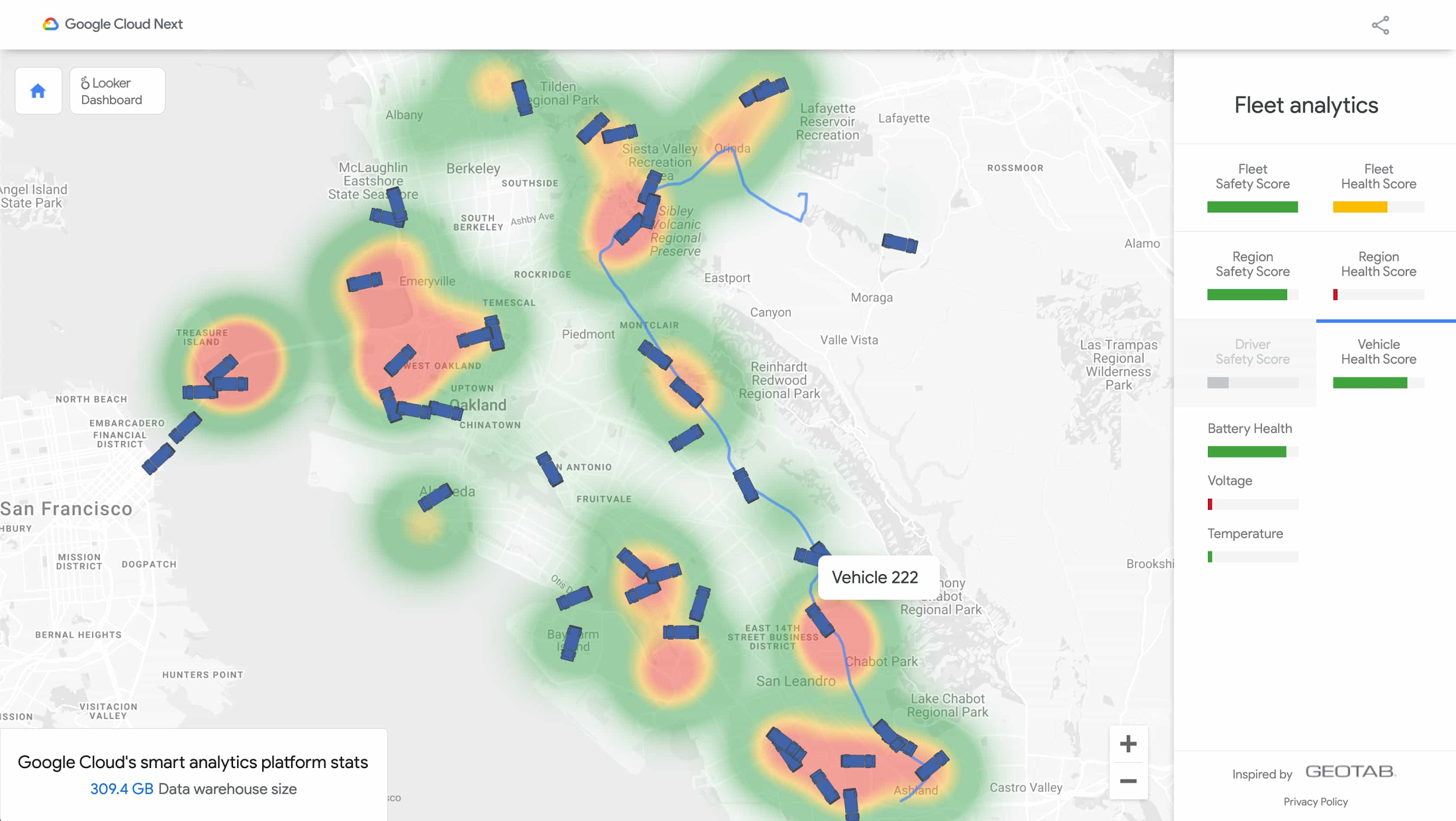

To create this, we first generated a simulated fleet of 7,500 trucks across 150 regions in the United States, each equipped with a simulated sensor that would emit data every few seconds. The data includes vehicle telematics data such as the GPS location, current speed, and current battery health. The data also contained information about each region, trip, and driver.
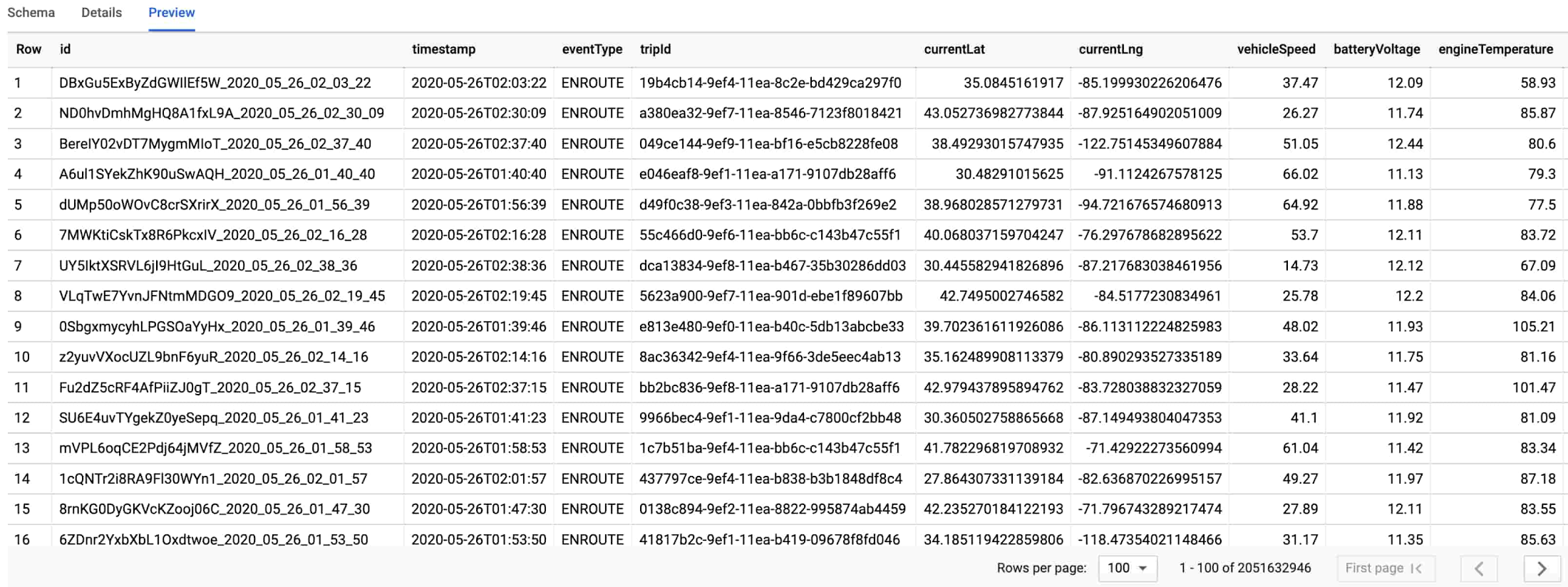

To ingest this constant flow of data into Google Cloud, we used Pub/Sub and Dataflow, automatically parsing all incoming sensor data into BigQuery (assuming one sensor per truck). With over 1 million trip data points stored in BigQuery per day, analysts could use SQL to quickly analyze massive amounts of data in seconds.
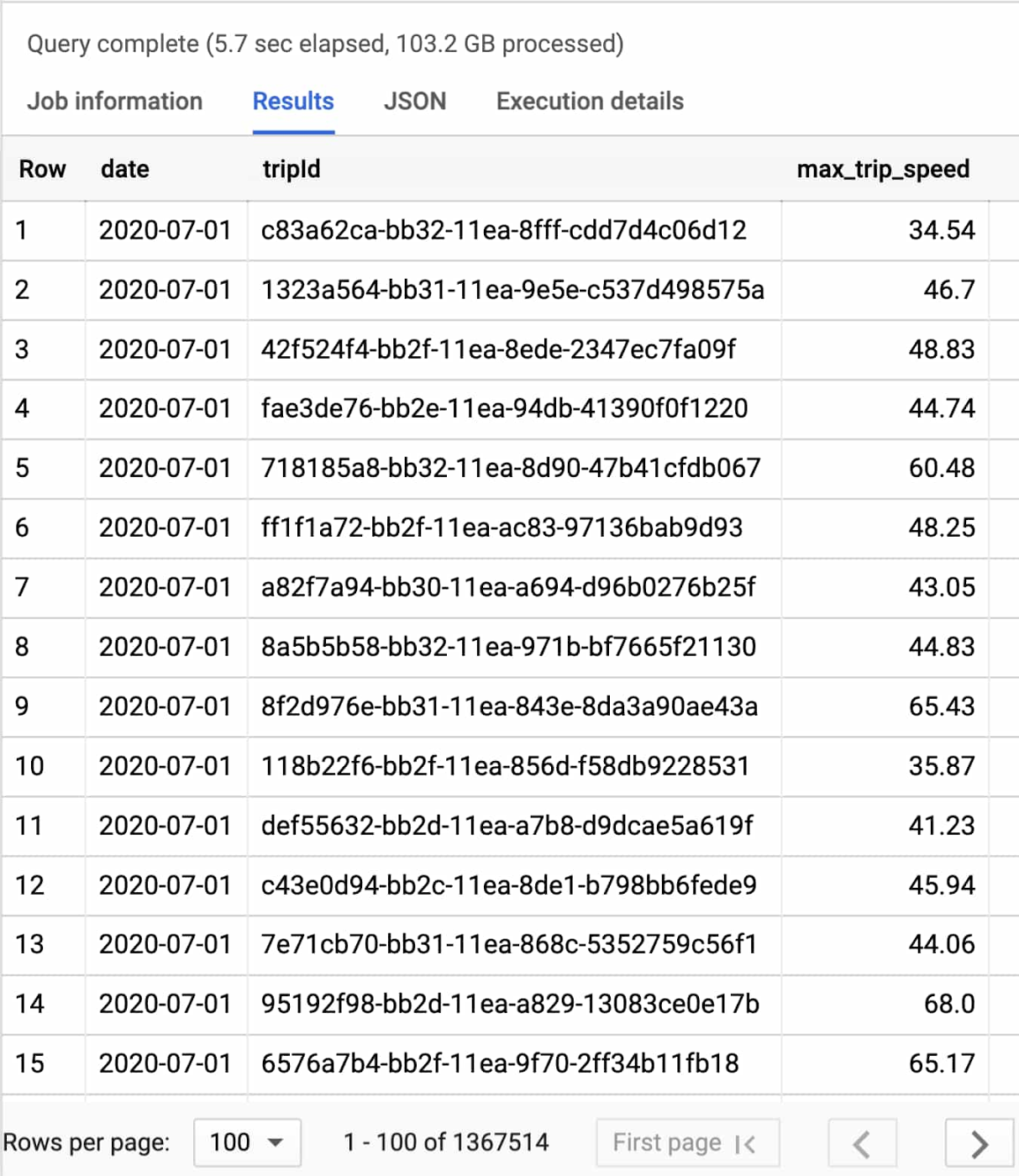

Predictive analytics was the next topic of interest. With data streaming into BigQuery, we could write algorithms to help anticipate any issues with driver safety or vehicle health. Using scheduled queries, we established a safety score of each driver based on how they drove in recent trips, with data points such as the level of acceleration or steering around corners when driving. If the result was “poor,” the fleet manager could address the driver ahead of the next trip.
In addition, vehicle health was updated on every trip to ensure the vehicle was in working condition, based on engine sensor data (i.e., battery health). This is computed at the beginning of every trip, too, to contribute toward improved predictive maintenance, one of the challenges in fleet management. BigQuery comes with machine learning capabilities via BigQuery ML, so it’s possible to create predictive models in SQL to forecast demand or predict unsafe driving conditions.
Visualizing fleet management data
With this data now available, how can it best communicate what actions a fleet operator could take? Since BigQuery natively integrates with business intelligence tools like Looker for out-of-the-box visual analysis, we used Looker to create dashboards to display some of the descriptive as well as actionable insights, as shown here:
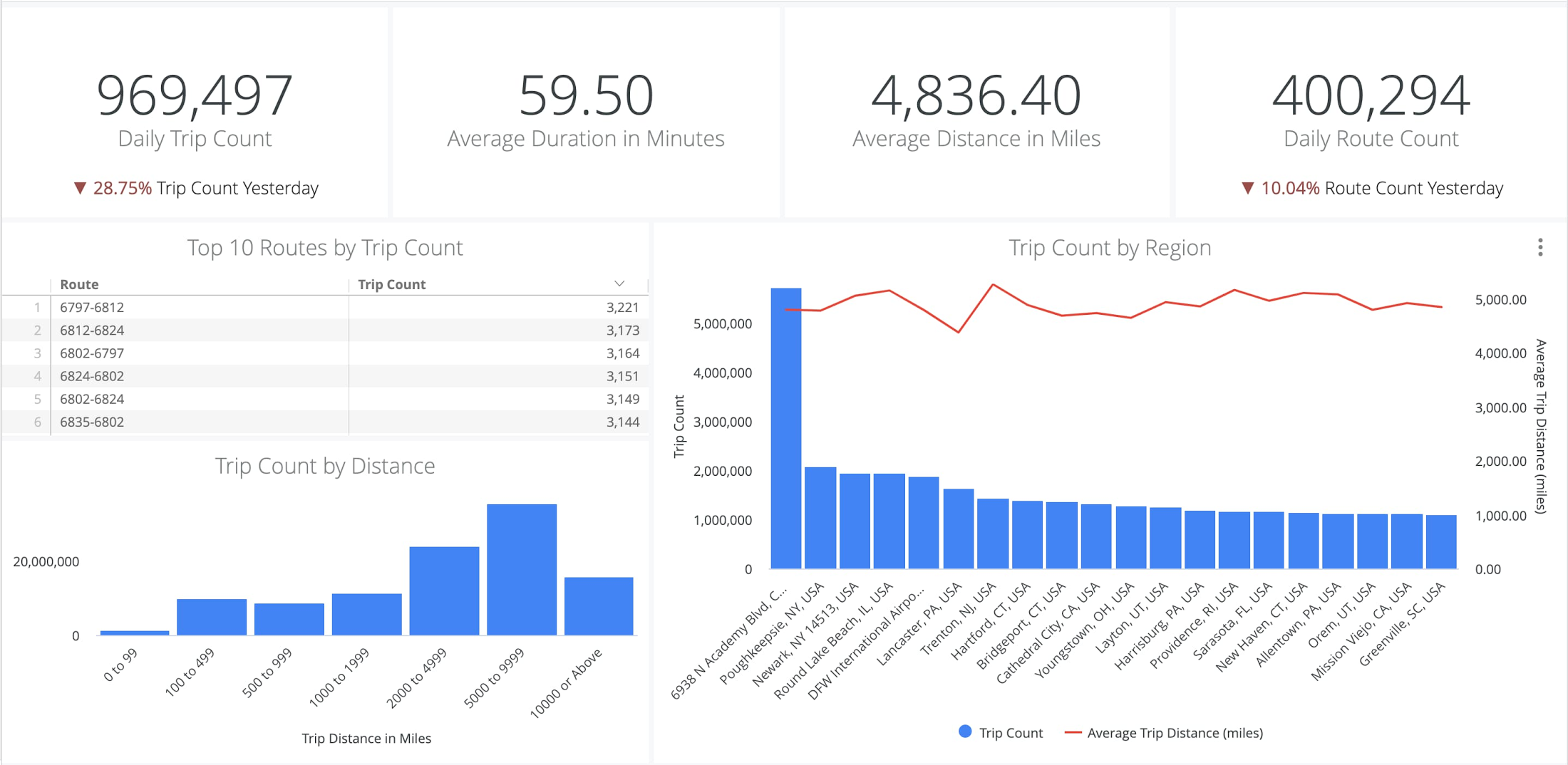

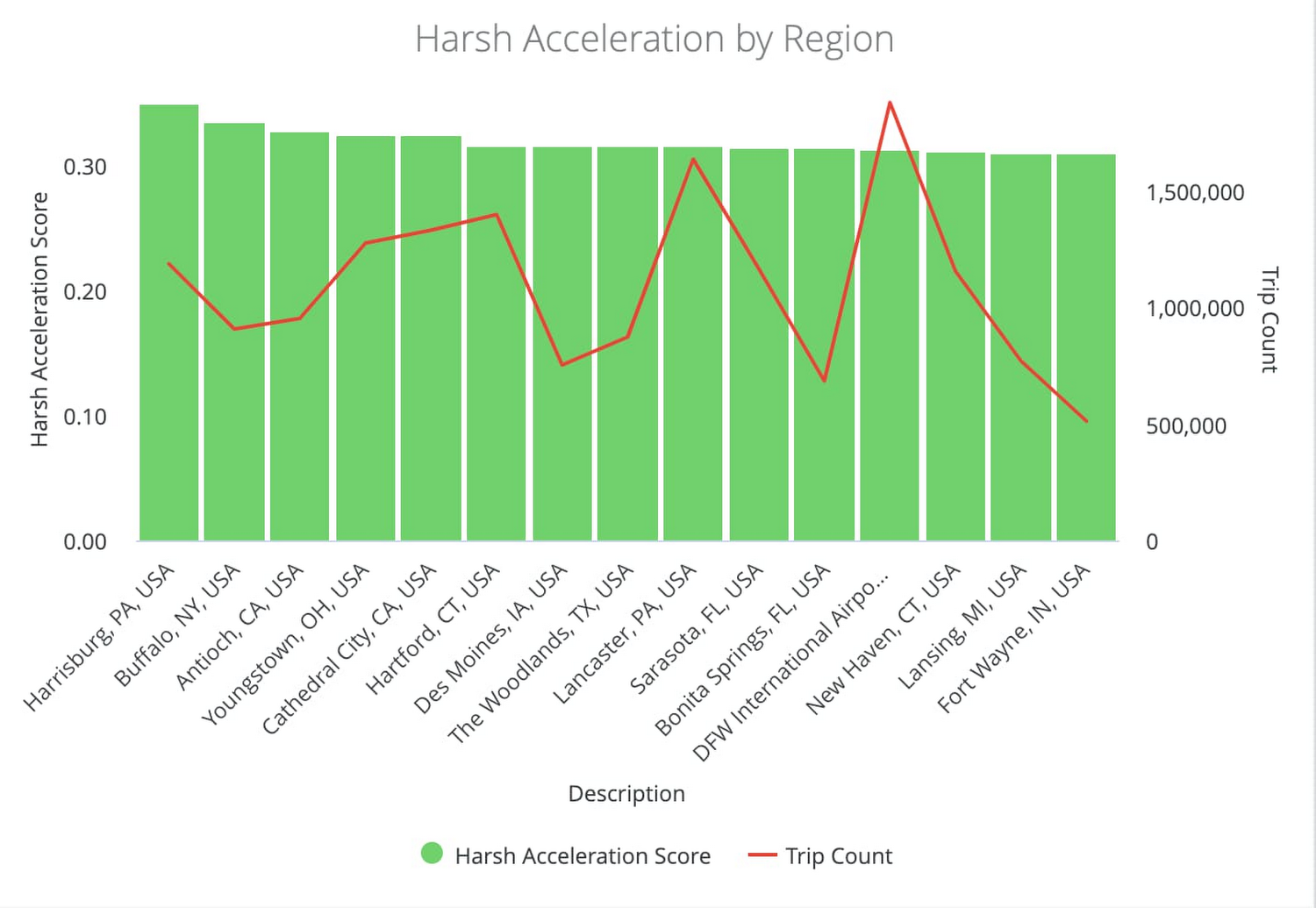

With Looker, analysts can create a single-source-of-truth data model where they define metrics using SQL. With a shared data model in place, business users can then use Looker to ask new questions of the data and build reports—all without needing a technical resource and still ensuring consistent metrics. For example, in the context of fleet management, an analyst might define the Harsh Acceleration Score in LookML, ensuring consistency and accuracy across the organization. In addition to dashboards and data exploration, Looker also provides a platform that enables end users to drive operational workflows through data actions (i.e., sending a text message directly to a driver concerning acceleration patterns).
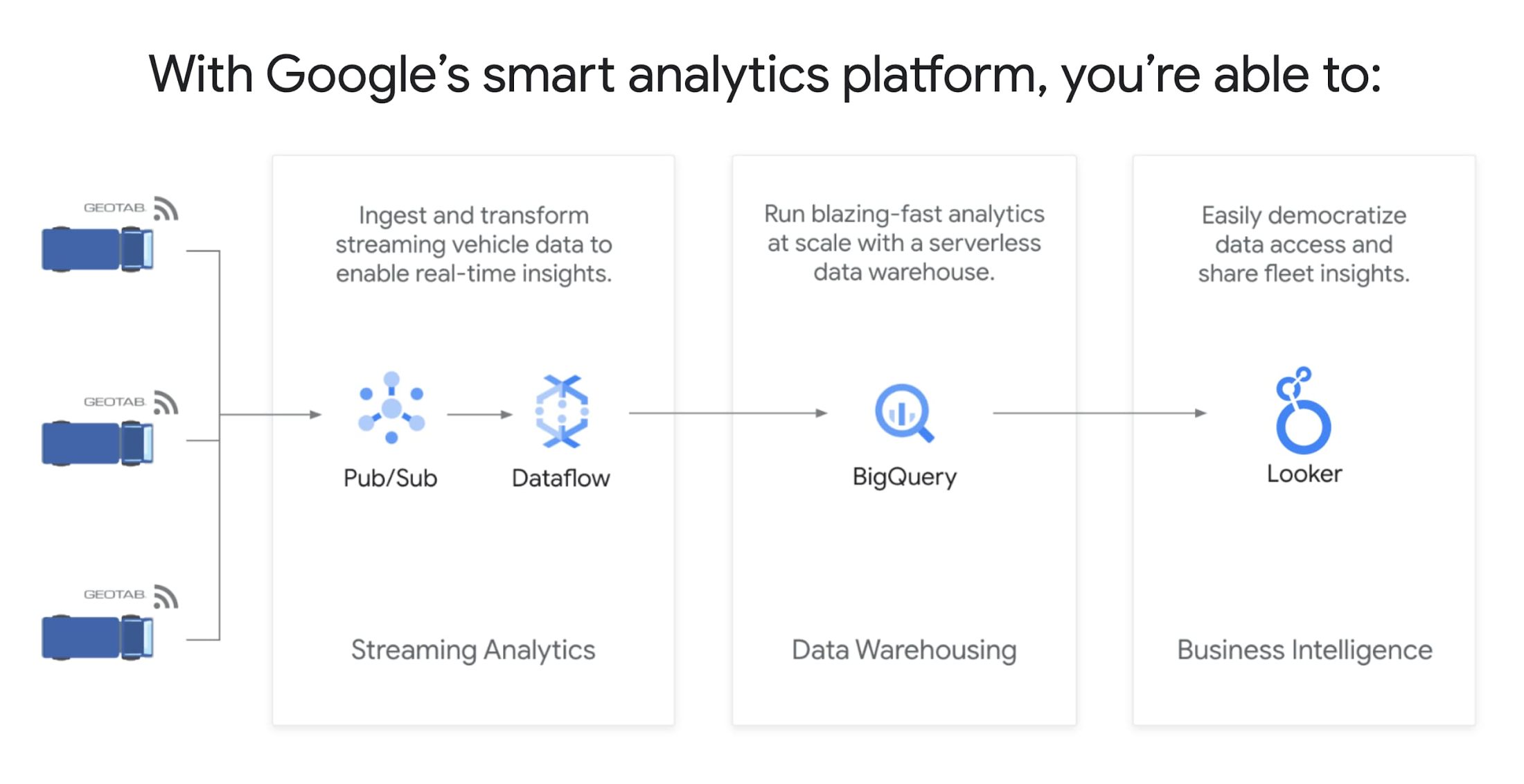

Google Cloud's smart analytics platform provides an end-to-end solution for your fleet data, so you can spend less time worrying about scale, speed and infrastructure, and more time delivering value to your customers.
See the full interactive smart analytics platform demo.
Special thanks to Zack Akil, Matt Olivo, and Leigha Jarett for their technical contributions to the demo.

